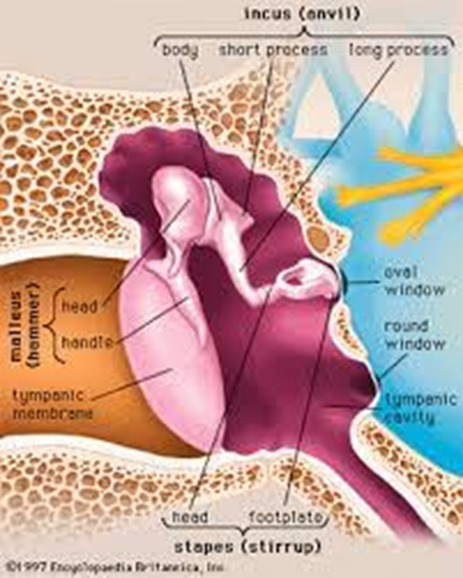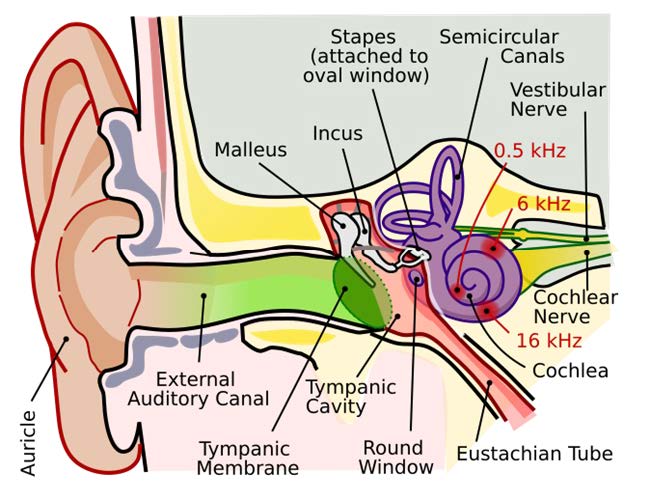Joseph R. Anticaglia, MD
Medical Advisory Board
A fistula is an abnormal connection between two parts of your body that don’t normally connect. The connection can result from a traumatic injury, pressure changes, infection, or surgery. The fistula can causebodily fluids to travel to areaswhere they shouldn’t normally exist.
Such is the casewith a perilymphatic fistula (PLF). The perilymph is a fluid which is normally contained within the bony structure located in the inner ear, called the cochlea. At one end of the cochlea is the membranous oval window, and at the other end is the membranous round window.
When there is damage, for instance a tear to the round window membrane, perilymphatic fluid travels, leaks from the inner ear to the air filled middle ear causing a myriad of problems. The fistula disrupts the normal flow of fluid, and pressure balance within the inner ear. This disruption can injure the delicate cells responsible for hearing, as well as those cells responsible for maintaining balance, preventing dizziness, and vertigo.. Oval and Round windows (Wikipedia )

Symptoms
The symptoms include:
Vertigo: Vertigo is the subjective sensation of spinning, or whirling which patients sometimes refer to as being dizzy. It can be mild, or disabling interfering with routine activities, and work. A perilymphatic fistula causes a disturbance of the inner ear fluid. The disturbance interferes with the normal transmission of electrical signals from the inner ear to the brain, which causes vertigo.
Hearing Loss: Perilymphatic fistula interferes with the transmission of normal sound waves (electrical signals) from the inner ear to the brain. The hearing loss may be sudden in onset, fluctuating (comes and goes), or may become permanent. The loss of hearing may be associated with ringing in the ears called tinnitus.
Balance Problems: People also complain of being off balance, having a feeling of unsteadiness,
Motion Sickness: Individuals with this condition experience an increased sensitivity to motion often associated with nausea, and vomiting.
Pressure: Symptoms worsen with pressure such as sneezing, nose blowing and straining.
People have also experienced ear fullness, at times headache, and trouble with their memory.
In short, perilymphatic fistula can disrupt the normal functioning of the inner ears hearing and balance systems leading to abnormal signals that the brain interprets as hearing loss, vertigo, balance problems and dizziness.
Main Causes:
- Trauma: Head injury, barotrauma (diving, scuba diving, air travel), blast exposure.
- Surgery: Complications from stapedectomy, or cochlear implantation.
- Sudden Pressure Increases: Coughing, sneezing, heavy lifting, difficult childbirth, Valsalva maneuvers.
- Congenital Weakness: Anatomical defect making the oval, and round windows more vulnerable.
- Idiopathic: Spontaneous occurrence of a perilymphatic fistula with no apparent antecedent event.
Diagnosis
Diagnosing perilymphatic fistula is challenging since there is no definitive diagnostic test, no ‘gold standard’ test for this condition. Also, the symptoms mimic other inner ear conditions such as Meniere’s disease. A careful medical history, and physical examination are particularly relevant in diagnosing PLF.
Medical History
Did symptoms, as noted above, start after trauma (e. g., head injury or barotrauma), air travel, strenuous activity (childbirth), or ear surgery? Do loud noises make you feel dizzy, unsteady on your feet, and cause you to experience vertigo (Tullio phenomenon)? A positive Tullio test is suggestive of a PLF.
Audiometry: To assess hearing loss.
Hearing tests can reveal a sensorineural, conductive, or mixed type of hearing loss often fluctuating
Fistula test: Done in the doctor’s office, involves applying pressure to the eardrum, and observing for nystagmus (involuntary eye movements), which may indicate a fistula.
Imaging studies: Can help rule out other pathology that cause some of the above symptoms. Direct visualization of the leak may be difficult.
Computed tomography (CT): May sometimes show air in the inner ear, (pneumolabyrinth) a strong indicator of PLF.
Magnetic resonance imaging (MRI): Can aid in diagnosis by showing fluid around the oval, and round windows.
Exploratory Tympanotomy: This surgical procedure is often considered the most definitive diagnostic test. The surgeon lifts the eardrum, enters the middle ear, explores, observes the round and oval windows for evidence of fluid from the inner ear. If a leak is observed, the surgeon patches the window often using tissue from the patient’s own body.
Biomarker (CTP): Cochlin-tomo-protein(CTP) is a perilymph specific protein that has demonstrated promise as a biomarker for perilymph in patients with perilymphatic fistula.
Treatment
Treatment for perilymphatic fistula depends on the severity, and underlying cause of this condition. Options include:
Conservative Management:
For mild cases, bed rest, head elevation, avoid heavy lifting, and straining. Use stool softeners, and medications to treat symptoms such as nausea, and vertigo.
Blood Patch:
In some cases, injecting a small amount of blood into the middle ear Can help seal the leak.
Steroids are used to prevent inflammation that might lead to hearing loss, and to minimize vestibular problems.
Surgery: Surgeon lifts the eardrum, enters the middle ear, and identifies fluid (perilymphatic fistula) leaking from the round window. The surgeon patches the leakage (fistula) with fascia, or perichondrium taken from the patient’s own body. Next, the surgeon returns the eardrum to its original position.
While surgery has a high success rate in resolving vertigo, the recovery of hearing loss is less predictable
Complications:
- Hearing Loss: Can range from mild to profound. The loss can be fluctuating, or permanent.
- Persistent, or worsening balance and vertigo issues
Perilymphatic fistula is a rare but potentially serious condition that can impact a patient’s quality of life. Early recognition and prompt treatment are crucial to prevent permanent hearing loss and mitigate debilitating, miserable vertigo symptoms.
ADDENDUM:

Glossary
The Tullio phenomenon is a condition where sound triggers vertigo, dizziness, or eye movements (nystagmus).
Inner ear organs responsible for balance are the semicircular canals and the otolith organs (utricle and saccule)
References
- Jarett Casale; Amit Agarwal; Anatomy, Head and Neck, Ear Endolymph; StatPearls, February 9, 2023.
- Joe Walter Kutz, Jr, MD, Arlen D Meyers, MD; Perilymphatic Fistula, Medscape, Jun 30, 2022
- Brooke Sarna, et al; Perilymphatic Fistula: A Review of Classification, Etiology, Diagnosis, and Treatment, Front Neurol., Sep 15, 2020
- Perilymphatic Fistula; Cleveland Clinic, Feb. 4, 2022
- UCI January, Perilymphatic Fistula,
- Matsuda H, et al. A nationwide multicenter study of the cochlin tomo-protein detection test: clinical characteristics of perilymphatic fistula cases. Acta Otolaryngol. (2017)
- Matsuda Han, et al; Assessing the efficacy pf perilymphatic fistula repair surgery in alleviating vestibular symptoms and associated auditory impairments; Front. Neurol., Oct. 12, 2023
- Shabi Fuhad et al; Perilymphatic Fistula; Stat Pearls, July 19,2023
This article is intended solely as a learning experience. Please consult your physician for diagnostic and treatment options.

